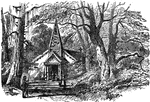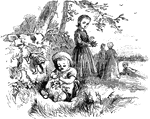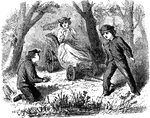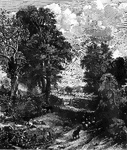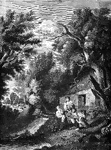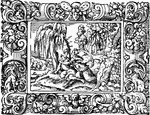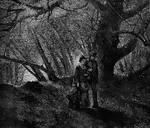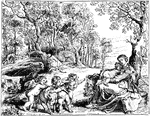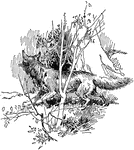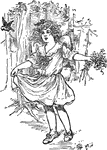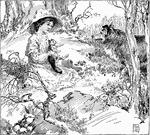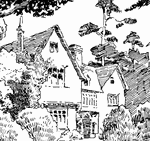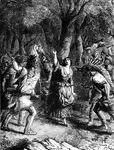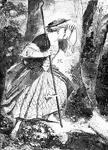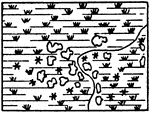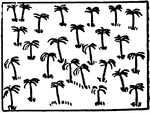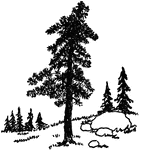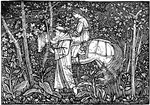
Hans Andersen
This drawing illustrated one of Hans Andersen's fairy tales. It was created by English illustrator Arthur…
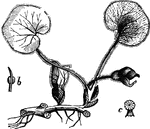
Asarabacca
"A plant of the natural order Aristolochiaceae, a native of Europe, growing in woods; rare, and perhaps…

Boy and Birds
Stories for children is a children's book by Francis Peard. This is one of the drawings in the book…
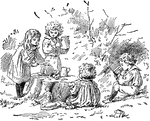
Children Playing Tea Party in Woods
An illustration of four children having a small tea party on a stump in the woods.
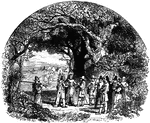
Colonists Interacting with Native Americans
A scene of New England colonists talking with several Native Americans in a wooded glen. In the background…
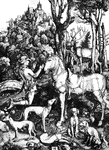
The Conversion of St. Eustace
"The Conversion of St. Eustace. By Albrecht Dürer. From the engraving on copper." -Heath, 1901
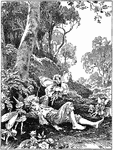
Fairy Tickling Boy Sleeping in Woods
An illustration of a fairy tickling a young boy sleeping in the forest underneath a tree.
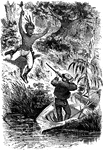
Fred Ransom and a Native American
From, Bache's book The Young Wrecker, the boy Fred Ransom defends himself against a Native American…
!["View of the remains of the French Works. These remains are in the southeastern suburbs of the city, about half way between the [African American] Cemetary and the residence of Major William Bowen, seen toward the right of the picture. The banks have an average height, from the bottom of the ditch, of about five feet, and are dotted with pines and chincapins or dwarf chestnuts, the former draped with moss. The ground is an open common, and although it was mid-winter when I was there, it was covered with green grass, bespangled with myriads of little flowers of stellar form. This view is from the direction of the town looking southeast."—Lossing, 1851](https://etc.usf.edu/clipart/14100/14147/french-works_14147_mth.gif)
French Works
"View of the remains of the French Works. These remains are in the southeastern suburbs of the city,…

Attack at Harrisonburg
"Gallant attack by 150 of the Pennsylvania Bucktails, led by Colonel Kane, upon a portion of General…
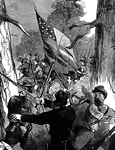
Attack at Harrisonburg
"Gallant attack by 150 of the Pennsylvania Bucktails, led by Colonel Kane, upon a portion of General…
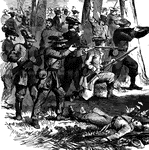
Attack at Harrisonburg
"Gallant attack by 150 of the Pennsylvania Bucktails, led by Colonel Kane, upon a portion of General…
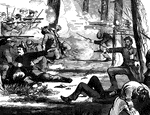
Attack at Harrisonburg
"Gallant attack by 150 of the Pennsylvania Bucktails, led by Colonel Kane, upon a portion of General…
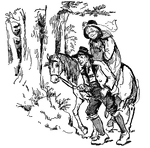
Adults and a Horse
An old woman sitting on a horse being led by an old man. They are traveling through the woods. A streamer…
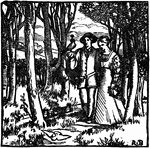
Art in the House
This print is part of a series of woodcuts called Art in the house that was designed by English artist…

Remote House
An illustration of a house located in a remote area. The illustration shows a man standing in front…
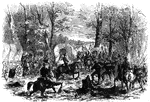
Lick Creek Bottom
"Advance of Federal troops on Corinth- the Carnival of Mud- scene at Lick Creek Bottom, between Pittsburg…
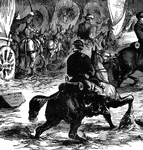
Lick Creek Bottom - Horse and Rider
"Advance of Federal troops on Corinth- the Carnival of Mud- scene at Lick Creek Bottom, between Pittsburg…
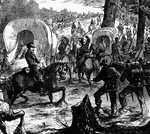
Lick Creek Bottom - In the Mud
"Advance of Federal troops on Corinth- the Carnival of Mud- scene at Lick Creek Bottom, between Pittsburg…
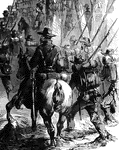
Lick Creek Bottom - Marching through the Mud
"Advance of Federal troops on Corinth- the Carnival of Mud- scene at Lick Creek Bottom, between Pittsburg…
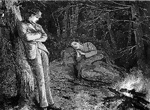
Man and Woman in Woods
An illustration of a man leaning against a tree watching the fire as a woman sleeps resting against…
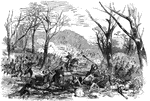
Battle of Mill Spring
"Battle of Mill Spring, on the Cumberland River, near Jamestown, between a confederate force, 8,000…

Battle of Mill Spring
"Battle of Mill Spring, on the Cumberland River, near Jamestown, between a confederate force, 8,000…
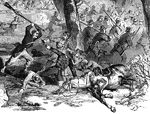
Battle of Mill Spring
"Battle of Mill Spring, on the Cumberland River, near Jamestown, between a confederate force, 8,000…

Battle of Mill Spring
"Battle of Mill Spring, on the Cumberland River, near Jamestown, between a confederate force, 8,000…
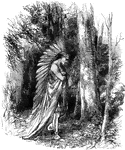
Native American with Large Headress
A male Native American with a large, feathered headdress walks through the woods.
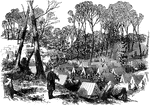
Camp of Ninth Massachusetts
"Camp of the Ninth Massachusetts Regiment in the woods, one mile from the Confederate fortifications,…
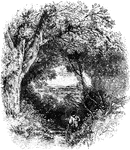
O'erarched with Oaks that Form Fantastic Bowers
An engraving by W. T. Green and Thomas Bolton, "O'erarched with Oaks that Form Fantastic Bowers." -Cundall,…

Battle of Pea Ridge
"Battle of Pea Ridge, Ark., fought March 6th, 7th and 8th, 1862, between the Federal forces, 13,000…
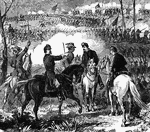
Battle of Pea Ridge
"Battle of Pea Ridge, Ark., fought March 6th, 7th and 8th, 1862, between the Federal forces, 13,000…

Battle of Pea Ridge
"Battle of Pea Ridge, Ark., fought March 6th, 7th and 8th, 1862, between the Federal forces, 13,000…
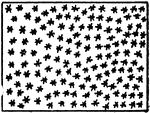
Pine (or Narrow Leaved Trees)
The typical representation of pine trees or any other narrow leaved trees on a topographical map.

Ramapo Pass
"Remains of intrenchments the Ramapo Pass. This view is from the road, looking north toward the village…

Reynard the Fox: Hiding the Treasure
Reynard the Fox secretly watches as his father sneaks away after hiding the treasure in the woods.
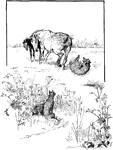
Reynard the Fox: Hunting Horses
Reynard the Fox and Isegrim the wolf find a mare and her colt. Reynard asks the horse if she would sell…
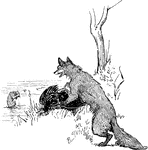
Reynard the Fox: Taunting Bruin
Reynard the Fox taunts Bruin the Bear who is hurt after getting his head stuck in a tree to get honey.
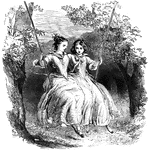
Girls on Swing
Two young women on a swing together. They are wearing long dresses and are surrounded by trees.
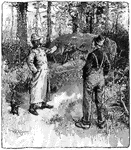
Men Talking
An illustration of two men talking in the woods. One man is pointing towards some covered up wheels…

